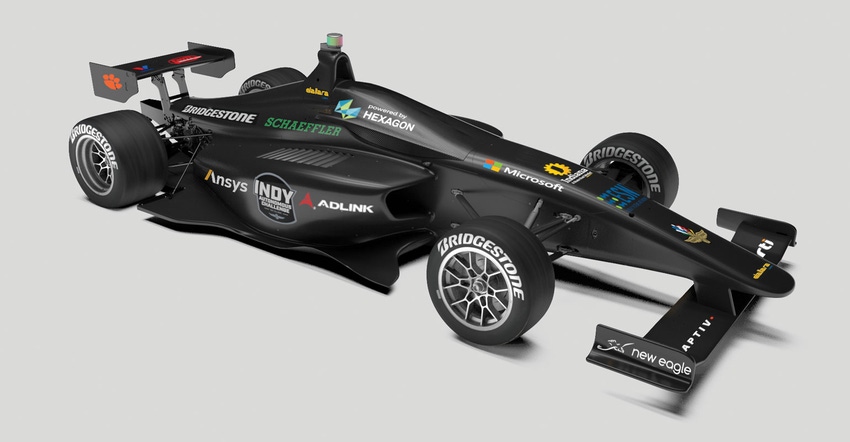February 1, 2021

This column is focused on equipment and technology for agriculture, but of course, sometimes we step a little sideways to point out advancements in other areas that may matter someday. That’s the focus this time out.
During CES 2021, which was a virtual event (thanks COVID), one announcement caught my attention — the Indy Autonomous Challenge (IAC). Yep, they’re bringing autonomous cars to the grand speedway in Indianapolis, but they’re leaving the drivers out. Organizers of the event include Energy Systems Network and the Indianapolis Motor Speedway. The list of sponsors is a who’s who of tech and autonomy, from Microsoft to Bridgestone to Aptiv and more.
This is a global challenge for university students who are charged with designing software that will allow an Indy class race car to operate at speed on the famous oval, sans driver. The car is a Dallara machine, the base of Indy cars today, and yes, it will have a full racing engine and not be electric. One challenge at a time.
Every team gets one model of the same car where their custom software can be installed to run the vehicle.
Students have been working on the software for this at 30 colleges and universities in 14 U.S. states and 11 countries. The grand prize is $1 million and “the promise of an autonomous mobility leap forward,” says Paul Mitchell, CEO, ESN. “This is the first-of-its-kind head-to-head challenge.”
Mitchell notes that teams will have been working on their software for two years when race day arrives Oct. 23. Many companies have provided equipment, software and technology know-how, he says.
The idea started 15 years ago with the Defense Advanced Research Projects Agency Grand Challenge, which pushed innovators to build autonomous vehicles to run a predetermined off-road course. However, they were working at a much slower speed of 5 mph.
Sebastian Thrun, a technologist and innovator involved with IAC, took part in that DARPA challenge. “We had 196 teams that competed to drive those vehicles 140 miles. Only five teams finished in 2007, and that was with robots in confined environments,” Thrun says.
High-speed robots
The IAC is no 5-mph race with remote-control cars. Each car must drive itself successfully on the track for 20 laps at speed. That means 180 to 200 mph. And with no drivers, some may try to push the Dallara car faster.
The 30 teams will be winnowed to 15 for the final competition. That happens with a “virtual” race May 20 at the Brickyard. Judges will evaluate the software as the cars “run” in the computer to determine who is closest to being ready to put the software in a real machine.
Those top 15 get to bring that software from computer into the real world and race on the famous Indy track. Of course, with robots, it could just be 5 lines of cars three deep going 200 mph like a parking lot — but that’s no way to win a race.
These student machines will have to jockey for position and be aware of all surroundings, at real-time speeds that would gray the hair of most everyday drivers. The car itself is a Dallara IL-15, which is the same chassis and power used in the Indy Lights series used to train young drivers for the full circuit. The car is retrofitted with hardware and controls to enable automation, including drive-by-wire technology and wire harnesses to support the sensors and other tools needed.
And remember, autonomous cars for the public roads have lanes and rules; at the Brickyard, there are no lanes, and face it — when the race is on, the rules are looser than for your average drive.
Why write about this for farmers? Autonomy is a hot topic in agriculture, and one where acceptance is an important issue. If something as public as an IndyCar event can show the true power of autonomy, that just further builds acceptance for use of driverless tools in the field. And besides, it’s wicked cool.
About the Author(s)
You May Also Like






